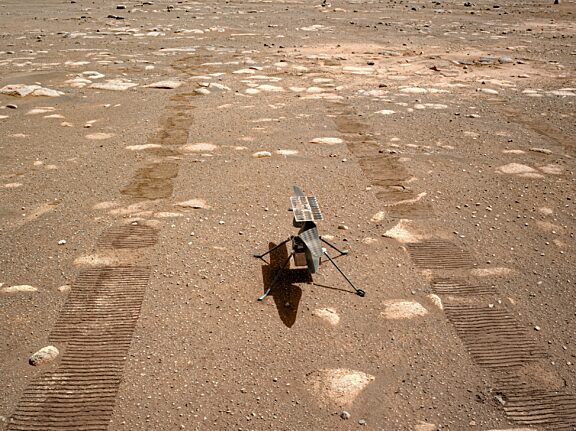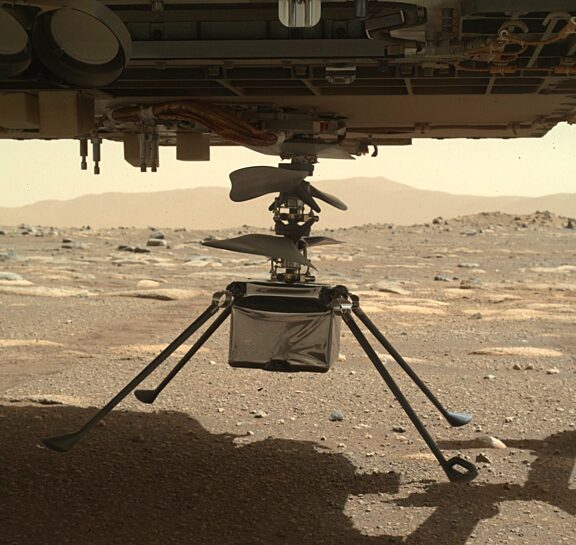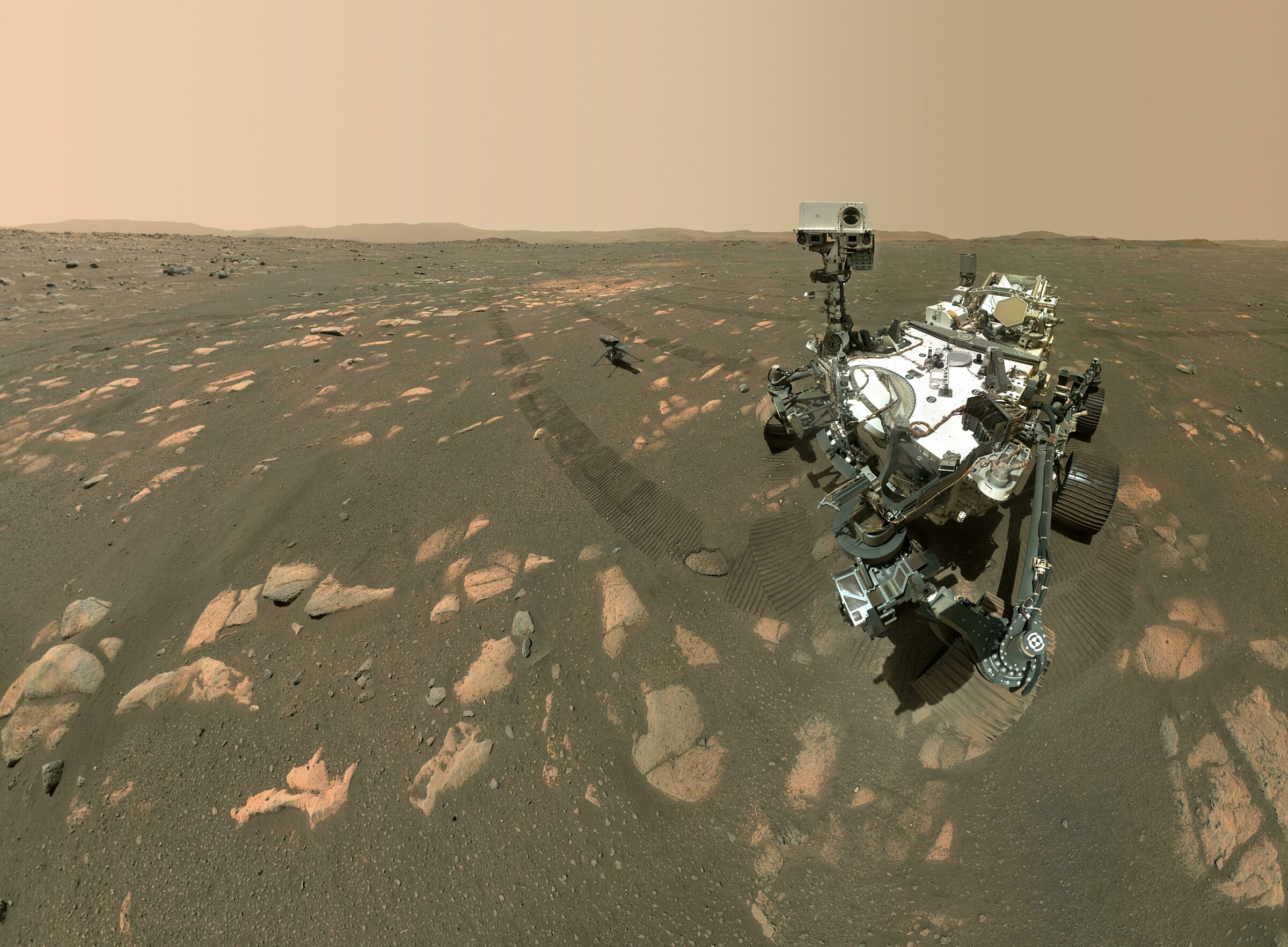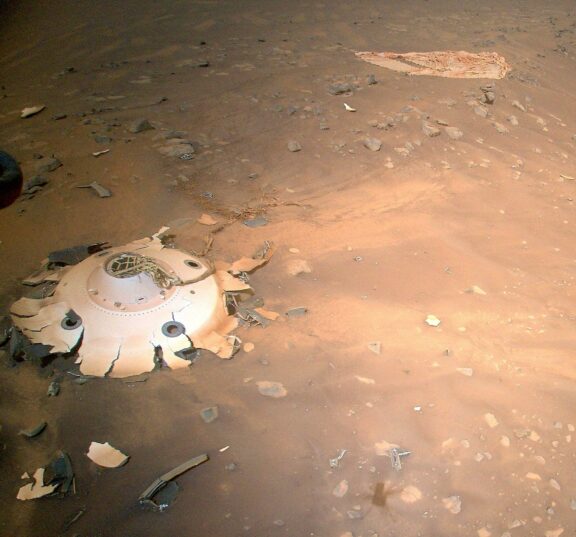Ingenuity, NASA’s Mars Helicopter
Highlights
- Ingenuity is a small helicopter that flew to Mars aboard NASA’s Perseverance rover.
- The helicopter made its first flight on April 19, 2021, proving powered, controlled flight on another world is possible.
- It operated for three years as a scout for Perseverance, before its 72nd and final flight on Jan. 18, 2024.
Why Ingenuity matters
Can we fly on other worlds? That’s what NASA’s Ingenuity Mars helicopter set out to answer on the red planet.
No spacecraft had ever taken off and landed on the surface of Mars or any other world until Ingenuity flew into the Martian skies for the first time on April 19, 2021. Before its mission ended, the helicopter made 72 flights, demonstrating a new mode of transportation for future planetary exploration missions.
Helicopters like Ingenuity could prove invaluable on Mars and other worlds. They could support rovers by scouting potential routes and identifying possible obstacles. They could also help scientists search for interesting geologic features and visit locations that neither rovers nor humans can reach.
Ingenuity-like drones could carry small science instruments or sampling equipment. They could search for landing sites for future Mars missions or serve as shipping couriers, carrying payloads from one location to another.
Lessons from the little rotorcraft will help inform future planetary flying missions like NASA’s Dragonfly spacecraft, which will explore Saturn’s moon Titan using an eight-bladed quadcopter. Dragonfly will buzz around Titan investigating a world with conditions similar to early Earth, including the basic ingredients for life as we know it.
When was Ingenuity’s first flight?
Ingenuity lifted off tucked beneath the belly of NASA’s Perseverance Mars rover on July 30, 2020. The rover deployed it over a multi-day period from March 26 to April 3, 2021.
Ingenuity made its first powered flight on April 19, 2021. The helicopter rose three meters (10 feet) off the ground, hovered for 30 seconds, and landed again. Following some additional test flights, NASA declared the helicopter had successfully met its objective of demonstrating controlled flight.
The mission moved into an operations demonstration phase starting with its sixth flight on May 22, 2021. For this phase, Ingenuity demonstrated how interplanetary helicopters could be used for aerial scouting. The helicopter hopped around Jezero Crater, an ancient river delta that may hold a record of past life, to image geologic features for the mission science team that could be worthy of exploration. Ingenuity also showed how it could assist rover drivers with route planning.

When did Ingenuity’s extended mission begin?
With the helicopter still in good health, NASA extended mission operations in March 2022. Through the end of its mission in January 2024, Ingenuity assisted the Perseverance team with scouting and route planning.
Perseverance and Ingenuity landed during the Martian spring, when days in the red planet’s northern hemisphere were longer and temperatures were higher. The Martian winter brought long nights and chilly conditions. Whereas Perseverance is nuclear powered, Ingenuity is solar powered and needs a strong dose of sunlight each day to charge its batteries and power the heaters that keep its electronics warm. The shorter days, along with more dust in the atmosphere, meant the helicopter wasn't getting enough battery power.
Nevertheless, it survived the harsh winter and continued operating until Jan. 18, 2024, when it broke one of its rotor blades during its 72nd and final flight.

The anatomy of Ingenuity
Ingenuity stands on the Martian soil using four carbon composite legs. It measures just 0.5 meters (1.6 feet) tall and weighs less than 2 kilograms (4 pounds). The helicopter produces lift to fly using two carbon fiber blades stacked atop one another. The blades measure 1.2 meters (4 feet) long apiece and rotate in opposite directions. They are thicker near the rotor than Earth-bound blades, which cuts down on vibration due to their high spin rates.
Atmospheric pressure at the Martian surface is only 1% of Earth’s. Therefore, the blades must spin very fast to lift Ingenuity off the surface. At the start of Ingenuity’s mission in Martian spring, the blades spun at about 2,400 rpm (revolutions per minute). In the Martian winter, they had to spin even faster due to falling atmospheric density.
Ingenuity charges its lithium-ion batteries using a rectangular solar panel perched above its two blades. A single battery charge enables it to fly up to 90 seconds per day. Hanging beneath the helicopter is a box containing the helicopter’s electronics, which include batteries, sensors, a color camera, and a black-and-white navigation camera.
How Ingenuity flew on Mars
It takes between 5 and 20 minutes for signals to travel between Earth and Mars, depending on the planets’ positions. That means Ingenuity pilots at NASA JPL couldn't simply control it with a joystick.
Additionally, Ingenuity doesn’t have a strong enough antenna to communicate directly with Earth. All of its communications with Earth must be relayed through a base station installed aboard Perseverance (and Perseverance’s communications are in turn relayed through a Mars orbiter). Pilots plan each flight and send commands to Perseverance, which relays the commands to Ingenuity.
Ingenuity must then autonomously complete the flight on its own. As it flies, the helicopter figures out where it is and where it’s going using data from its cameras, a laser range finder, and an inertial measuring unit.
Images and data from each flight are sent back to Earth using Perseverance. The stunning images Ingenuity captures provide valuable engineering information. They are also used to excite the public about space exploration. Each flight is logged in a special handwritten pilot’s logbook similar to the ones pilots use on Earth.

What is Ingenuity named after?
Vaneeza Rupani, a high school student from Northport, Alabama, named the helicopter through a NASA contest.
"The ingenuity and brilliance of people working hard to overcome the challenges of interplanetary travel are what allow us all to experience the wonders of space exploration," she wrote.
NASA named the Perseverance rover’s landing site after the science fiction author Octavia E. Butler. It also christened the location of Ingenuity’s first flight, Wright Brothers Field, in honor of the two brothers who made the first airplane flight in 1903. Ingenuity also carries a small piece of fabric from the original Wright Brothers Flyer 1.
How much did Ingenuity cost?
Ingenuity cost $80 million to build, with another $5 million set aside for operations during its original one month mission. That’s just a fraction of the $2.7 billion cost of the Perseverance mission through its first two years of mission operations.
Ingenuity demonstrates the value of adding low-cost technology demonstration projects to larger missions. The helicopter is not part of Perseverance’s science objectives, yet it has surpassed expectations and is continuing to show its value by assisting the rover’s mission team.

Academic resources
- Balaram, J., Aung, M. M., & Golombek, M. P. (2021). The ingenuity helicopter on the perseverance rover. Space Science Reviews, 217(4).
Support missions like Ingenuity
Whether it's advocating, teaching, inspiring, or learning, you can do something for space, right now. Let's get to work.


 Explore Worlds
Explore Worlds Find Life
Find Life Defend Earth
Defend Earth


